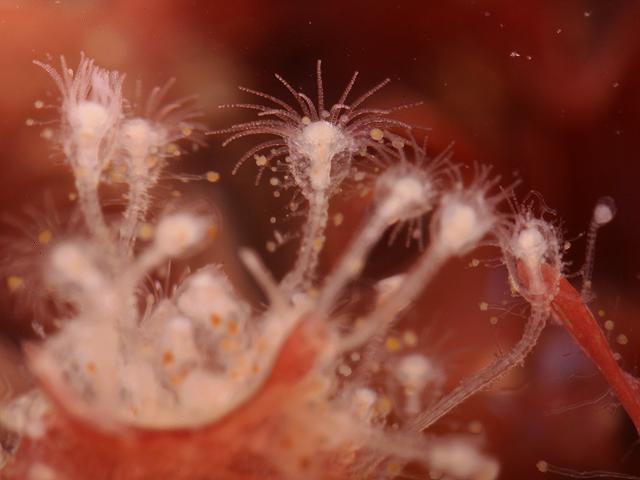
APHOTOMARINE
An educational resource dedicated mainly to the photography
and diversity of marine life that can be found in coastal waters
and intertidal areas of Great Britain and Ireland by David Fenwick.

Clytia hemisphaerica (Linnaeus, 1767) - A campanulariid hydroid (Hydrozoa images)
Scroll down and rollover titles to change screen image or click on title to view image.
Campanulariid hydroid
Clytia hemisphaerica
Hydroid stage
- close-up 1
Clytia hemisphaerica
Hydroid stage
- close-up 1
Campanulariid hydroid
Clytia hemisphaerica
Hydroid stage
- close-up 2
Campanulariid hydroid
Clytia hemisphaerica
Hydroid stage
- on Lomentaria articulata 1
Campanulariid hydroid
Clytia hemisphaerica
Hydroid stage
- on Lomentaria articulata 2
Campanulariid hydroid
Clytia hemisphaerica
Hydroid stage
- on Lomentaria articulata 3
Campanulariid hydroid
Clytia hemisphaerica
Hydroid stage
- on Lomentaria articulata 4
Campanulariid hydroid
Clytia hemisphaerica
- medusa 1
Campanulariid hydroid
Clytia hemisphaerica
- medusa / greyscale 1
Campanulariid hydroid
Clytia hemisphaerica
gonothecae on Lepas 1
Campanulariid hydroid
Clytia hemisphaerica
gonothecae on Lepas 2
Campanulariid hydroid
Clytia hemisphaerica
gonothecae 1
Campanulariid hydroid
Clytia hemisphaerica
gonothecae 2
Images of hydroid stage taken on Lomentaria articulata, Jointed pod weed, a red seaweed, on the middleshore at Chyandour Rocks, Penzance, Cornwall. 25.09.11. Images of gonothecae taken on a paintbrush covered with Stalked barnacle, Lepas anatifera, found at Lesceave Cove, Praa Sands, Cornwall. 12.12.14. Medusa was found at Newlyn Marina, Newlyn, Cornwall. 16.08.15.
Specimen and fish box above was found washed-up on the beach at Marazion, Cornwall, 22.10.13.
Clytia johnstoni and Campanularia johnstoni are synonyms of Clytia hemisphaerica.

The main objective of this website is in furthering environmental awareness and education through the medium of photography. To increase awareness and access to the wildlife of the region and help
people find and identify it. Sometimes the difference between species is obvious but many species can only be determined by observing microscopic characteristics that are specific to any one species.